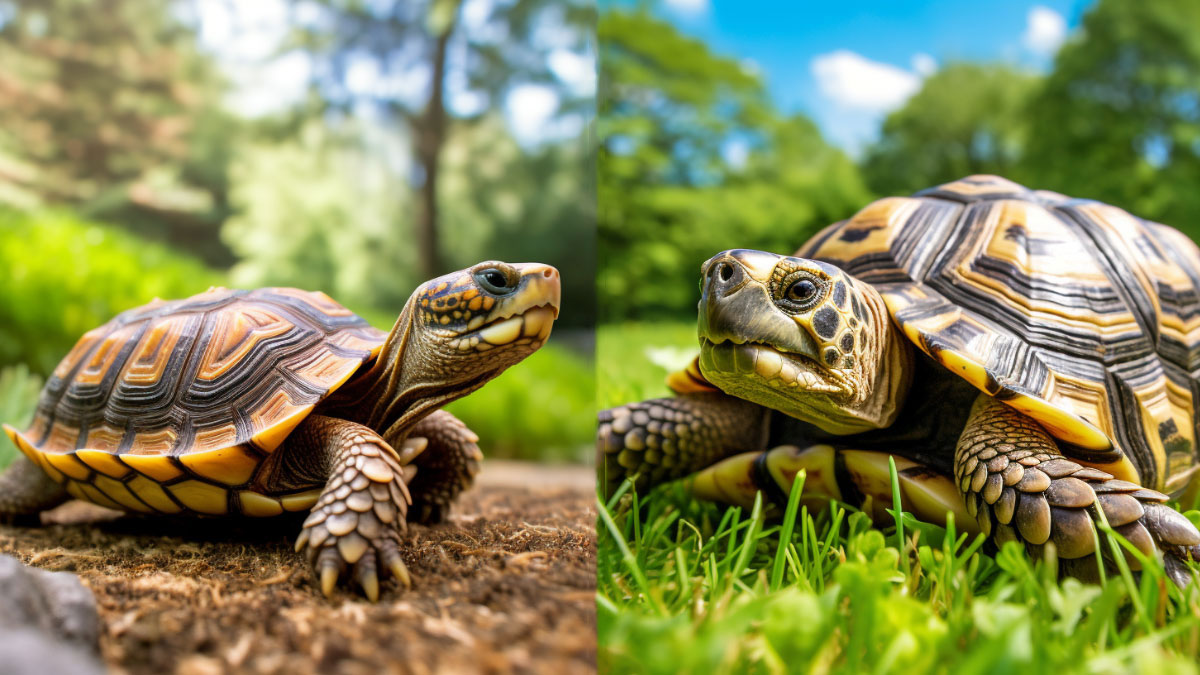Box Turtle vs Tortoise: Is a Box Turtle a Tortoise?
Many get confused between box turtles and tortoises. While they have similarities, they have their own unique differences too.
Is a box turtle a tortoise? No. Both box turtles and tortoises have domed shells. Hence, people commonly get confused about these two. However, Box turtles have webbed feet like sea turtles and tortoises have thick, straight, elephant-like feet. Box turtles will sometimes be seen in groups near water bodies or wetlands, but tortoises are solitary creatures that always live on land.
In this guide we’ll talk about the differences between both of these animals and discuss how they’re both unique in their own ways.
Box Turtle vs Tortoise
Contents
Before we talk about box turtles and tortoises, it’ll be a good idea to learn about the basics of both turtles and tortoises.
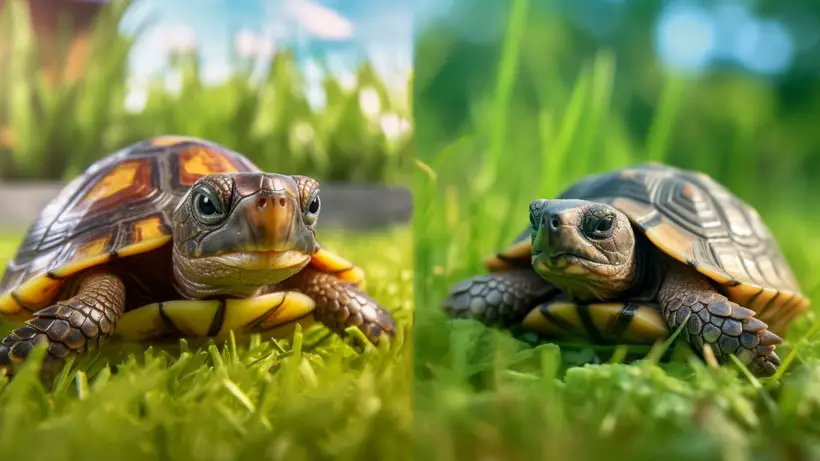
Turtles and Tortoises
Turtle is an all-inclusive name for three distinct animals: Tortoises, Turtles and Terrapins.
- As a matter of fact, while tortoises are different from what we basically know as turtles, they’re actually a sub-type of the turtle family.
- Turtles spend their lives almost totally in water bodies. They do come to land at times, especially while laying eggs and nesting.
- Tortoises, on the other hand, live on the land completely. They’ll sometimes bathe in water, but that’s basically their primary interaction with water besides drinking it.
- Tortoises have thick, well-padded feet to support their weight as they walk on the land. But turtles have webbed feet that help them swim fast underwater.
- Turtles usually have shells that are a bit thin and flat-shaped. The design helps them move smoothly underwater. As a matter of fact, the shell is the major physical difference between a turtle and a tortoise.
- Tortoises have dome-like shell which is very thick and heavy. This shell works as armor for them, helping them protect themselves from attacks from other animals. Box turtles have a dome-shaped shells too, which is why people commonly confuse them with tortoises.
- The diet of these two varies too. Turtles are omnivores – meaning they eat both plant-based foods as well as meat, basically small fish. Tortoises are usually herbivores, which means they eat fruits, vegetables and other plant-based stuff.
Box Turtle vs Tortoise: is a box turtle a tortoise?
We’ve discussed the basics of turtles and tortoises and also talked about a few of their major differences. Let’s now move into talking about box turtles and tortoises.
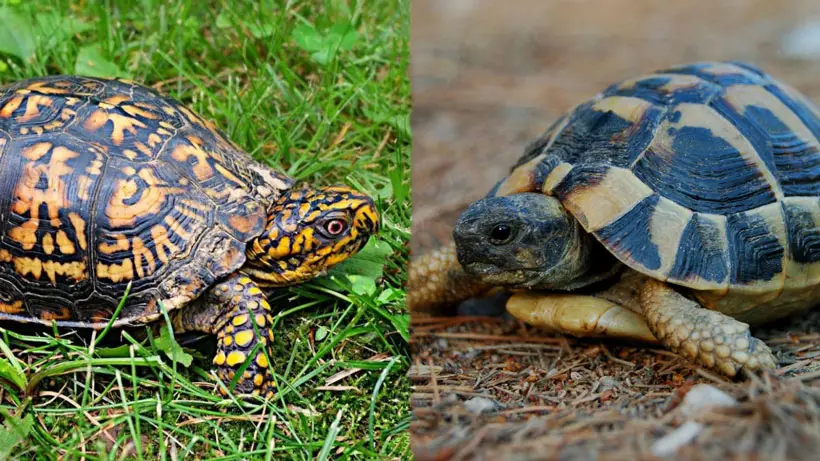
Let’s look at a table to know the distinctions between these two, briefly.
| Box Turtle | Tortoise | |
|---|---|---|
| Feet Shape | Webbed Feet | Thick, Straight Feet |
| Habitat | Moist areas such as tropical forests or near water | Dry Land with good vegetation |
| Shell Structure | Dome-like shape with a somewhat thick shell | Dome-like shape with a very thick and heavy shell |
| Social Life | A mix of solitary and grouped life. They have groups known as “Bale” consisting of 3-4 turtles | Mostly solitary but socializes when it’s time to mate |
| Diet | Omnivores are when insects and small fish are available to eat. Otherwise, herbivores | Herbivore. Occasionally omnivore |
| Plastron (Underside) | Dark Brown or Black Colored Plastron | Plastrons could be yellow, dark brown or black colored. But male tortoises have concave and females have convex plastron |
| Lifespan | Usually 50 years or more | More than 50 |
| Scientific Family | Emydidae | Testudinidae |
Box Turtle vs Tortoise: Major Differences
We can categorize the differences between a box turtle and a tortoise in 5 points. They’re described below:
1. Feet Shape
While turtles have thin feet to help them move in underwater fast, box turtles have feet that look similar to the legs of a tortoise. A box turtle’s feet are thicker than a sea turtle’s feet but thinner than those of a tortoise.
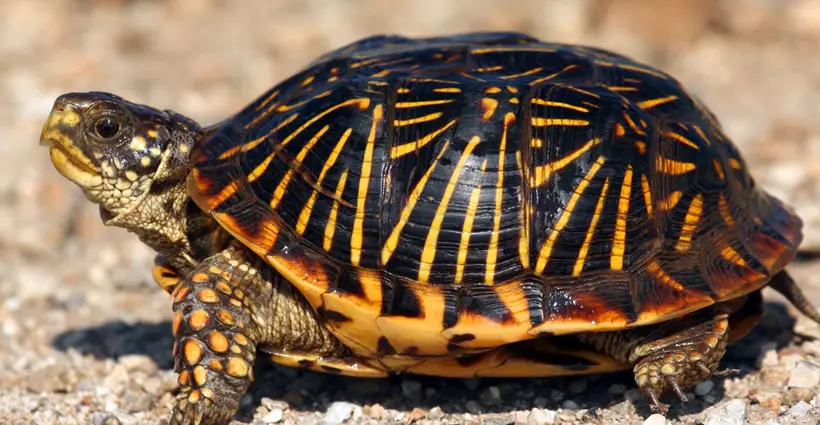
A tortoise’s legs are straight to support their walking on land since they walk on the earth. Unlike sea turtles, which spend time swimming and have webbed feet to move underwater easily.
Besides feet, a box turtle has a pelvic girdle down under its ribcage. Its shell is connected to its vertebrae and ribs as well. Noticing these features will also help you figure out the differences between a box turtle and a tortoise.
2. Typical Habitat
Marine turtles a.k.a sea turtles spend almost all of their lives in the sea. They only come to land when necessary, such as egg laying and nesting times. Tortoises spend their whole lives on land. In fact, the way a tortoise’s shell is designed, it’s not water-dynamic at all.
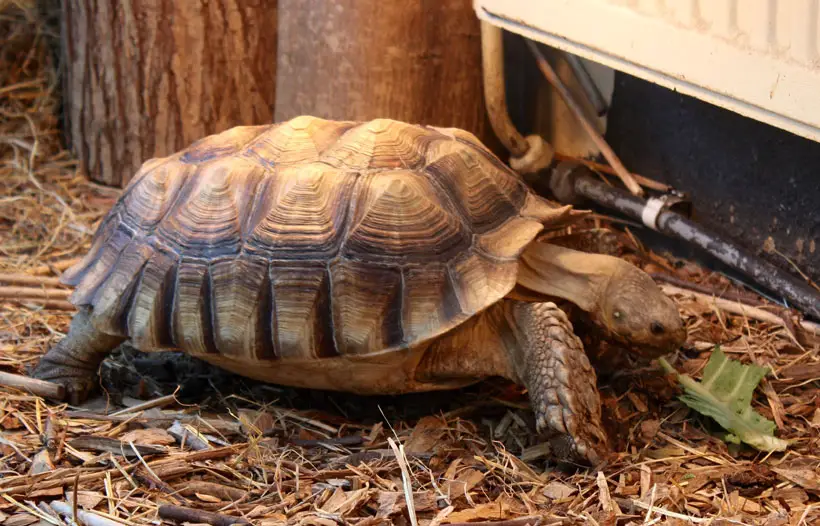
Moreover, adult tortoises can weigh up to 250 to 500 pounds, depending on their gender and species. With thick body structures and weights like these, it’s impossible to support their weight on water. So, swimming is a no-brainer for these.
Box turtles live in wet areas such as tropical wet forests or around rivers, swamps and marshlands.
3. Shell Structure
Unlike the shells of sea turtles, box turtles’ shells are a bit rounded. This is actually a reason why people confuse these with tortoises. Sea turtles’ shells are almost flat and water-dynamic (which is similar to aero-dynamic, but for water movement).
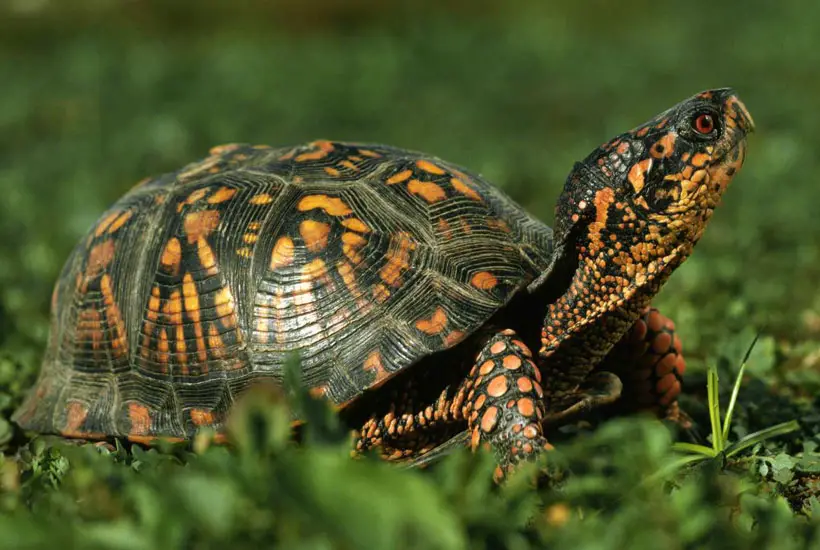
Box turtles don’t need to swim fast because of their habitat. Thus, their shells aren’t designed to move fast in the water.
However, tortoises have shells far thicker than those of box turtles. A Tortoise shell can be up to a quarter of an inch, depending on its age. As a general rule, the older a tortoise gets, the thicker and stronger its shell becomes, making the shell more protective of the organs inside.
4. Social Life
In the wild, it’s quite uncommon to see a group of tortoises, which is called a creep. Tortoises like to live on their own and spend most of their time alone. While they lead a long life of 50 – 60 years in the wild, they mostly socialize during times of mating.
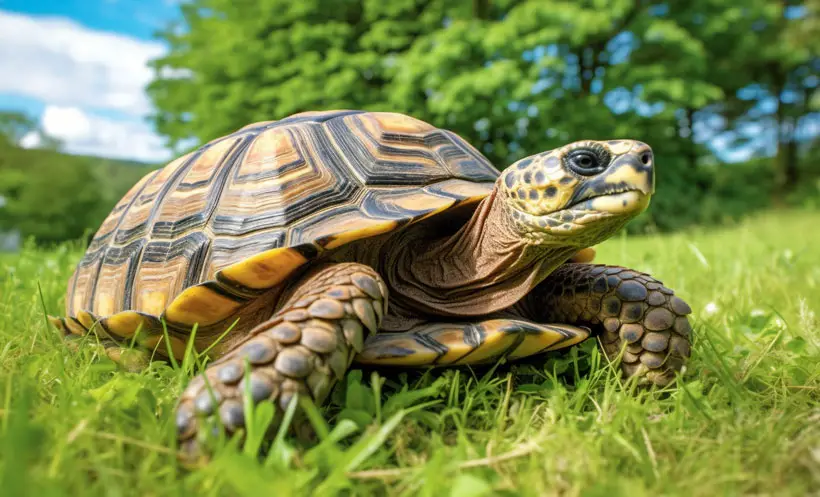
Box turtles, on the other hand, will socialize often. They can be seen in groups of 3-4 turtles, which is known as a bale, after heavy rain. These can live for 50 years or more in the wild.
5. Food
Tortoises are basically herbivores, while some species will eat meat, but that too occasionally. They usually eat insects, low-vegetation plants, crabs, grass, berries, flowers, mushrooms, and so on.
Box turtles are omnivores if meat is available; otherwise, they are herbivores. Also, since they live in wet areas, they have a fondness for wet vegetation. They like insects, plants and amphibians such as frogs, etc.
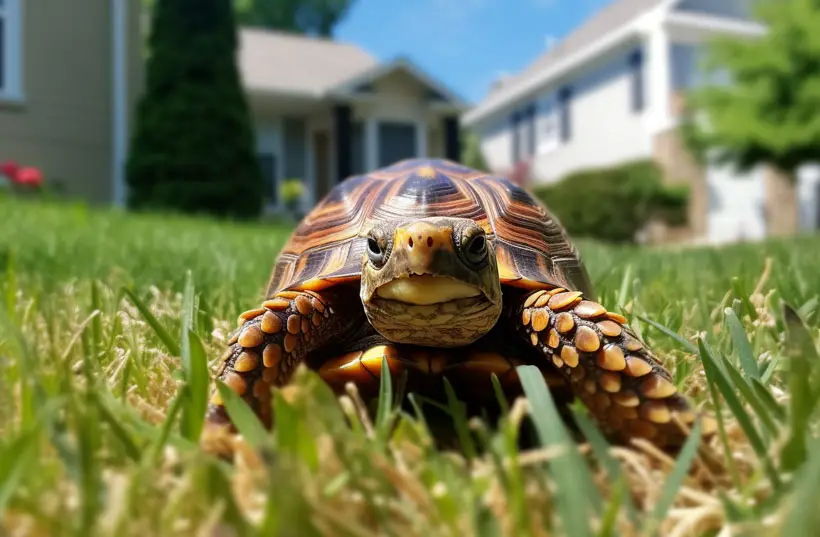
FAQs
Now let’s move on to talking about a few commonly asked questions about box turtles and tortoises.
Yes. Both of them make good pets if you have the patience. They do not like human interaction like other pets, such as cats or dogs. But if you can care for them for many years (yes, they have long lives), you can go for them.
If talking about friendliness, tortoises like human interaction more than box turtles do. If properly cared for, they can be long-lasting pets easily. But be careful before bringing home one.
Most turtle and tortoise owners lose the patience of keeping these as pets after a few months or years and choose a different pet afterward.
No, they can’t. Their bodies aren’t designed to swim or move easily underwater. They’re “land only” animals and only use water while drinking it and occasionally bathing in it.
They’re only aggressive while it’s the mating season. A tortoise will spend decades after its birth before it finally mates. It gets aggressive at that time and once mating is complete, it gets back to its usual docile nature.
Final Words
While it’s easy to confuse a box turtle with a tortoise or the other way around, you now know how to find both of them correctly. Maybe you’re a box turtle or a tortoise owner or someone looking to get one of these as pets. Hopefully, this guide helped you.
Knowing about the proper classification of your pet turtle will help you understand its needs adequately and provide its care the way it needs.
As these are long-lived creatures, they need their proper diet and safe environments to have their long lives.

